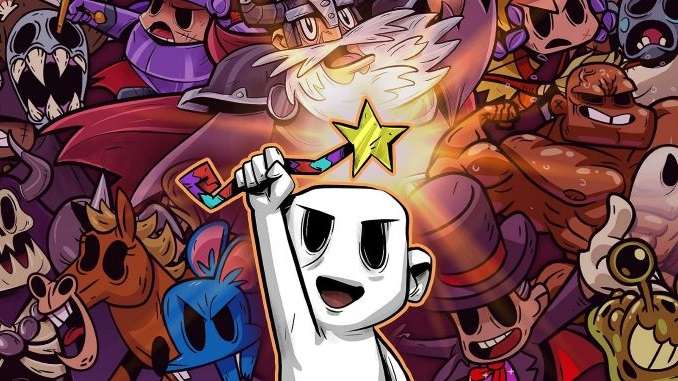Nobody Saves the World Is a Charmingly Ridiculous Action RPG Inspired by Classic Zelda

Do you remember playing pretend as a kid? The fantastic worlds you’d invent around yourself and the fun you’d have being anything you dared to be? Do you remember the first time you broke the self-imposed rules of pretend? Like why settle for being a rogue when you could be a rogue who shoots lightning or settle for being a person at all when you could be a lizard or something to that effect. With the world (and lightning) at your fingertips, you dared to be anyone or thing you could imagine yourself as. It was empowering, but more importantly to your younger self, it was fun. Delightful, even, to dream of a world with limitless possibilities. Nobody Saves the World, the latest game from Drinkbox Studios (the Guacamelee! games and Severed), seems predicated on that moment—and then some, actually. Age yourself up some and slap a crude, but not gross, sense of humor on those imaginary adventures and you’re closer to what this game promises. If I could sum up my time with Nobody Saves the World in a word, it’d be “ridiculous,” and while it occasionally misses the mark, I mean that in the best possible sense.
In Nobody Saves The World, you are Nobody, a pale and pantless being who wakes up with no memory of who they were. Before long, they find a wand belonging to a powerful wizard named Nostramagus that allows Nobody to shape-shift and become any number of somebodies at the behest of Nostramagus’ power-hungry apprentice Randy the Rad and other characters who doubt him. And boy do they have reason to doubt them because Nobody does not impress. They don’t look particularly human and can barely hit harder than a toddler. Over the course of a few dozen hours however, you and Nobody get to explore the forms granted by this shape-shifting wand, becoming everything from a horse to a slug and even an egg. At one point, Nobody became a ghost and by the end, they can even become a dragon. The possibilities in Nobody Saves the World are limited, but they didn’t need to be endless to be fun.
The game’s shape-shifting ability is its biggest selling point and I’m happy to confirm that it’s good as hell. Different forms do different damage types and get their own active and passive abilities that help you whoop “baddies” and cross off any number of the (astonishingly) dense number of dungeons across the game world. The forms are good fun, never playing so distinctly from another that you feel there’s even remotely a learning curve, but playing uniquely enough that you will begin to understand the time and place to pull out one over another. The depth of the experience comes from learning how best to mix these forms and abilities, because as you level yourself and them up, you will be able to cross abilities over between them. The dodge your Ranger learned could come in handy for a less agile class, for example, or you can give your Rogue a whirling blunt attack from your tankier Bodybuilder that can knock foes away.
You level by taking on quests as these forms, which range from “use x ability on y baddies” to more direct calls to cross over skills, giving the player an idea of the different combinations they can make. These latter quests are a great tease of the depth of this system and I enjoyed falling down its rabbit hole one too many times trying to build the perfect tanks, ranged classes, jacks-of-all-trades and whatever lies between them all.

These combinations are key to solving the game’s “puzzles” and keeping gameplay as fresh as can be, though at times even those combinations can only do so much. The dungeons in the game are procedurally generated, meaning there’s little room for tighter design. Instead, Drinkbox adapted and implemented a ward and modifier system that ratchets up the difficulty of the dungeons as best they can accomplish. Wards are shields that break when they take a certain damage type, of which there are four (Light, Dark, Blunt and Sharp) in the game. Modifiers are ascribed to most of the dungeons and can be anything from regenerating wards to enemies healing at the same time that you do. The most ridiculous (there’s the operative word again) of these that I encountered set any damage dealt or received to 9999. The wards and modifiers are occasionally smart adaptations that make for a welcome challenge, asking me to care more about speccing my forms. Nobody Saves the World is an action-RPG after all. At other turns, however, they feel fairly one-note. Once you’ve figured out a build against them, which shouldn’t take long, the dungeons stop being even remotely complicated and you just mow everything down, or in some places just run past enemies if you can.
-

-

-

-

-

-

-

-

-

-

-

-

-

-

-

-

-

-

-

-

-

-

-

-

-

-

-

-

-

-

-

-

-

-

-

-

-

-

-

-








































